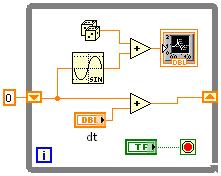G Programming Help for G Language
Introduction to G Programming Language
G Programming Language stands for Graphical Programming languages G programming Language is a high level dataflow graphical Programming Language. It is also known as G-code and used in LabView. It is designed to develop application which are Interactive, Execute in parallel or Multicore.
Graphical programming languages, also known as visual programming languages (VPLs) or block-based programming languages, are a category of programming languages that use visual elements, such as icons, blocks, and graphical symbols, to represent and manipulate code and program logic. Instead of writing text-based code with syntax rules, programmers use a drag-and-drop interface to create and arrange these graphical elements to construct algorithms and applications. Graphical programming languages are often used in educational settings and are particularly well-suited for beginners and those who are not familiar with traditional text-based coding.
Here are some key aspects of graphical programming languages:
-
Visual Representation: In graphical programming languages, program logic is represented visually through a combination of blocks, symbols, and connecting lines. Each block or element corresponds to a specific function, operation, or piece of code.
-
Drag-and-Drop Interface: Programmers build their applications by selecting blocks from a palette of available options and dragging them onto a canvas or workspace. These blocks are then connected to define the flow of the program.
-
No Textual Syntax: Unlike traditional programming languages, graphical languages do not rely on text-based syntax. This can make them more accessible to beginners who may find textual code intimidating.
-
Modular Approach: Programs are built using modular components, with each block representing a discrete function or operation. This modular approach promotes code reusability and simplifies debugging.
-
Real-Time Feedback: Many graphical programming environments provide real-time feedback, allowing users to see the immediate effects of their changes as they build and modify the program.
-
Educational Tools: Graphical programming languages are often used in educational settings to teach programming concepts to beginners, children, and students. They provide a hands-on and intuitive way to learn the basics of coding and algorithmic thinking.
-
Application Areas: These languages are commonly used in fields such as game development, robotics, IoT (Internet of Things), data visualization, and interactive media design.
Examples of popular graphical programming languages include:
-
Scratch: Developed by MIT, Scratch is one of the most well-known graphical programming languages for teaching coding to children. It features a colorful, block-based interface and is widely used in educational settings.
-
Blockly: Blockly is an open-source visual programming library that can be integrated into various applications and platforms. It allows developers to create custom block-based programming environments.
-
LabVIEW: LabVIEW (Laboratory Virtual Instrument Engineering Workbench) is a graphical programming language primarily used for data acquisition, instrument control, and industrial automation. It's widely used in engineering and scientific applications.
-
LEGO Mindstorms: LEGO Mindstorms uses a graphical programming language to control robotics kits, making it accessible to both children and hobbyists.
Graphical programming languages have their advantages, especially for beginners and those working in fields where rapid prototyping and visual representation are essential. However, they may have limitations in terms of expressing complex algorithms compared to text-based languages. Ultimately, the choice between graphical and text-based programming languages depends on the specific needs and goals of a project or the skill level of the programmer.
Diagram of G Programming Language



